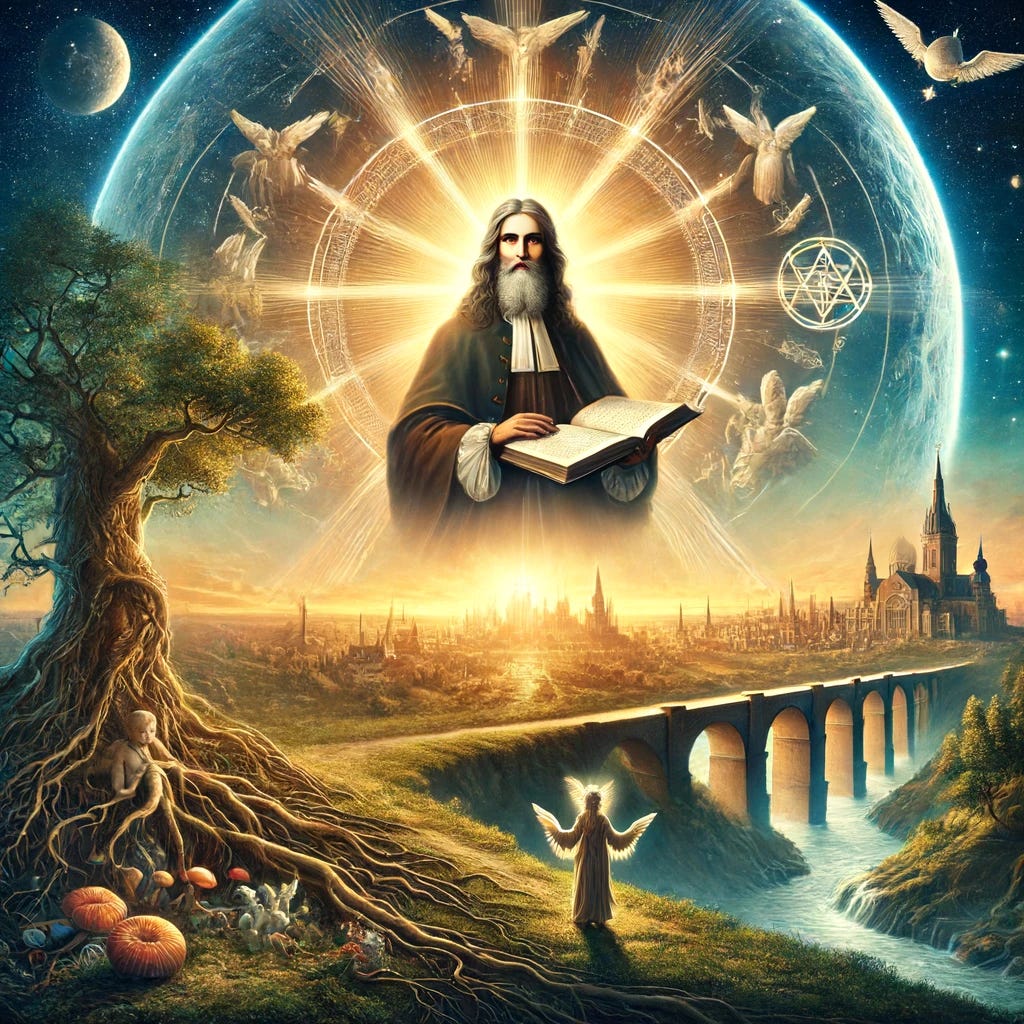The Fantastic Revelations of Swedenborg
Did Joseph Smith adopt key features of this now obscure denomination in his formulation of Mormon eschatology?

I recently came upon information about Swedenborgianism, a now obscure sect originating during the First Great Awakening. I'm not an expert, but I found the parallels with LDS beliefs striking enough to write about. I did my best to follow up on primary sources and throw out information that I found to be inaccurate. I am, however, indebted to an article posted by Craig W. Miller - which can be found here.
Swedenborgianism, a restorationist denomination, finds its origins in the prophetic revelations of Emanuel Swedenborg. Born in 1688, Swedenborg was a unique blend of scientist, theologian, and mystic. Between 1741 and 1744, he claimed to have been visited by the Savior and other heavenly messengers, who commanded him to pen his revelations, expanding upon and interpreting the Bible. His theological works, notably “Heaven [and its Wonders] and Hell” (1758) and “The True Christian Religion” (1771), form the foundation of Swedenborgian beliefs1.
Following Swedenborg's passing, the New Church movement began to take shape, establishing congregations in Europe and North America. By the early 19th century, Swedenborgianism had made significant inroads in the United States. The first organized church, the General Convention of the New Jerusalem (or Church of the New Jerusalem), was formed in 1817, with churches built in several northeastern locations, including Baltimore, Maryland, Boston, Philadelphia, and New York. At that time, Swedenborgianism was a prominent Christian denomination known for its robust missionary activities, and the book “Heaven and its Wonders and Hell” became an American bestseller in the 1820s.2
Points of Contact
While the extent of Joseph Smith and the “New Church” 's interaction remains a matter of open inquiry, J.S. was familiar with Swedenborg’s writings. Here are just a few points of contact. There are many more I have not included.
Swedenborgians published their own pamphlets and tracts to spread their message to a rural audience in early-nineteenth-century America. Thus, it would be harder to argue against a familiarity with Swedenborgian teaching on the part of Smith than to argue for it. Indeed, he himself in the late 1830s was said to have admitted to a Mormon convert his acquaintance with the Swedish seer: ‘‘Emanuel Swedenborg had a view of things to come, but for daily food he perished.’’3
Swedenborg was a household name in 19th-century upstate New York.4 It is claimed that his books “Heaven [and its Wonders] and Hell” and “Arcana Coelestia,” were both in the Palmyra public library, and the local bookstore offered copies of Swedenborg publications for as little as 37 cents.5
Parley P. Pratt - an early LDS apostle, said that “Swedenborg’s revelations were received from unholy spirits.”6 His brother Orson Pratt - also an early LDS apostle - said, “Swedenborg […] taught doctrines in some respects true, and in other respects false.”7
Jonathan Chapman, aka Johnny Appleseed, was a Swedenborg missionary who spread Swedenborg’s writings across the American frontier. Jonathan Chapman traveled extensively through Ohio from the early 1800s until his death in 1845. Chapman was in Ohio at the same time Joseph Smith was in Kirkland. J.S. and his followers moved to Ohio between 1831 and 1832.
Similarities and Differences
Doctrinal similarities between LDS and Swedenborg are astonishing and impossible for me to believe are coincidences, largely due to the specificity and uniqueness of the doctrines. I will start with the more unique doctrines and progress toward those that could have come from sources other than Swedenborg. Some readers may note that most of the similarities concern Eschatology, the major focus of Swedenborg’s most popular writings and the ones Joseph Smith most likely had access to.
The Three Degrees of Glory and Outer Darkness
Swedenborg describes heaven and hell in detail, detailing three Spheres of Heaven, a "World of Spirits” and Perdition. The LDS versions of these beliefs arose in Ohio in 1832, where Johnathan Chapman, the Swedenborg missionary, was very active during this time.
Keep reading with a 7-day free trial
Subscribe to Latter-Day Saint to Orthodox to keep reading this post and get 7 days of free access to the full post archives.


